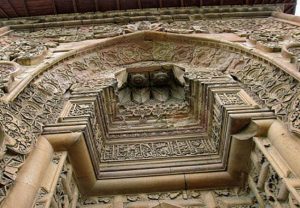Anatolia, the land of sun, history and civilizations, is one of the rare places in the world which have been inhabited ever since the first man was seen on the earth.
EARLY AGES
The result was a unique Anatolian civilization which has long inspired the thoughts and legends of the West. The ancient Bronze Age witnessed the establishment of the first independent city states. At that time, the centre and southeast of Anatolia were inhabited by the indigenous Hattis. The most spectacular findings from this time are those of Alacahoyuk in the Kizilirmak region and of Horoztepe near Tokat, in the Black Sea region. They are contemporary with the royal tombs of Mycenae in Greece.
LEGENDARY TROY
Troy was founded around 3000 BC, and played a major role in the importation of tin, vital for the production of bronze.
HITTITES
The Hittites arrived in Anatolia towards the second millennium BC. They absorbed much of the Babylonian civilization and long enjoyed a monopoly of iron in Asia. This, combined with the use of the chariot, gave the Hittites a military superiority over Egypt and other Mesopotamian states. The victorious raid against Babylon in 1590 BC was the climax of the first Hittite Empire, followed by a period of decline. Then, in the first half of the fourteenth century, came a revival of power. This second era saw a Hittite hegemony snatching from the shores of the Mediterranean to the Persian Gulf.
MITANNI KINGDOM
The Mitanni Kingdom was a contemporary and the enemy of the Hittites. It was founded by the Hourrites, a people originally from the South Caspian Sea. The Hourrites exercised considerable influence over the religion of the Hittites, and spread the use of two wheel chariots and the breeding of horses throughout the Near East.
URARTIAN STATE
At the beginning of the first millennium BC, the Urartus created a unified state whose territory extended from the Caucasus to Lake Urmiya, with its capital in the present city of Van. The Urartus were masters in hydraulic works and skilled in irrigation, drainage and the construction of canals and artificial lakes. They were also known for their horse breeding and formidable cavalry.
PHRYGIANS AND KING MIDAS
The Phrygians between 750 and 300 BC settled in Central and Western Anatolia, in the Afyon – Ankara – Eskisehir triangle, declaring Gordion on the Sakarya river to be their capital.
Their civilization met its apogee in the second half of the 8th century BC, under the famous King Midas whom, according to the mythology, Apollo ridiculed by having him grow ears of a donkey, and whom Dionysus invested with the power to turn everything he touched into gold. Gordion fell to Persian domination around 550 BC and was liberated in 333 BC by Alexander the Great.
LYDIANS
Around East of Izmir in Sardes, lived another people, the Lydians, thought to have invented money between 800 and 650 BC. In the 6th century BC, Croesus, the King of Lydia, agreed with the advancing Persians to divide Anatolia along the river Kizilirmak. The Persians, however, did not keep this commitment and continued to encroach on Lydian territory. They remained the sovereign power in Anatolia until the arrival of Alexander the Great in 333 BC.
PERGAMON
After the death of Alexander the Great, Anatolia became the hub of the Seleucid Empire. Pergamon grew at the expense of its neighbours, and snatched part of Phrygia in 241 BC. The kingdom became prodigiously rich, the emporium of Anatolia and a brilliant intellectual centr




